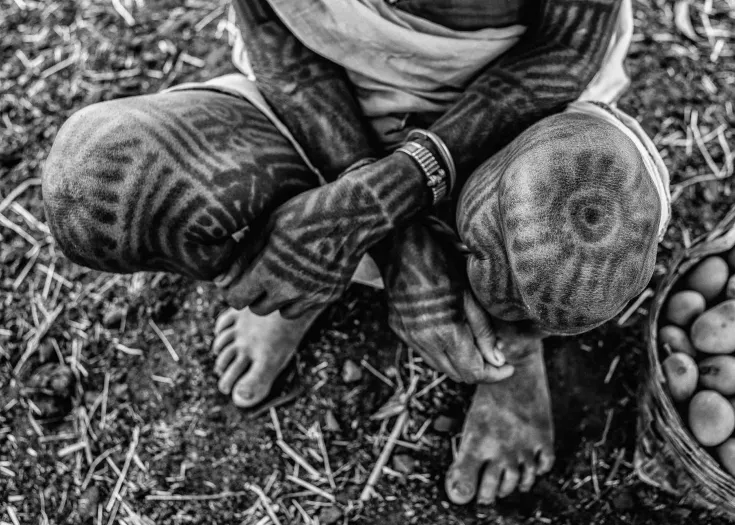Tattoos, an ancient form of body art, have been an integral part of Indian culture for ages. While some people today view tattoos as a fashion statement or trend, their roots can be traced back to various indigenous tribes that practised the art of tattooing. In this article, we will be looking into the history of tattoos in India, exploring the origins, and traditional practices of different tribes, and the evolution of this art form over time.
What is Tattoo?
Before we dive into the history, we will provide a brief overview of what tattoos are—a form of art where individuals get themselves engraved with ink on their bodies using a needle. The psychological reasons behind tattoos in Indian culture vary, from fashion and trends to preserving memories or showcasing cultural influence. Tattoos can be temporary or permanent and often involve a level of pain during the process.
History of Tattoo in India
The art of tattooing in India can be traced back to prehistoric times when tribal people were captivated by drawings on stone or wood walls. Their curiosity led to the discovery of tattooing using needles or sharp tools. Various tribes in India have incorporated tattoos into their culture, making it a popular ritual. Despite the vast diversity of tattooing cultures in India, information on the subject is relatively scarce, found mainly in obscure academic and governmental reports, early 20th-century census pamphlets, and archives. This lack of access and documentation is due to the remoteness of many tattooed tribes, historical suppression, forgetfulness, and discrimination against tribal practices seen as primitive.
Let’s explore some of these tribes and their unique tattoo practices:
Konyak Tribe in Nagaland
The Konyak tribe practices exclusive tattooing on men to symbolise their transition into manhood. Prior to tattooing, young men must prove their eligibility by capturing an enemy’s head from another village. The tattooing process is performed by the chief’s wife and often covers the face, neck, and chest.
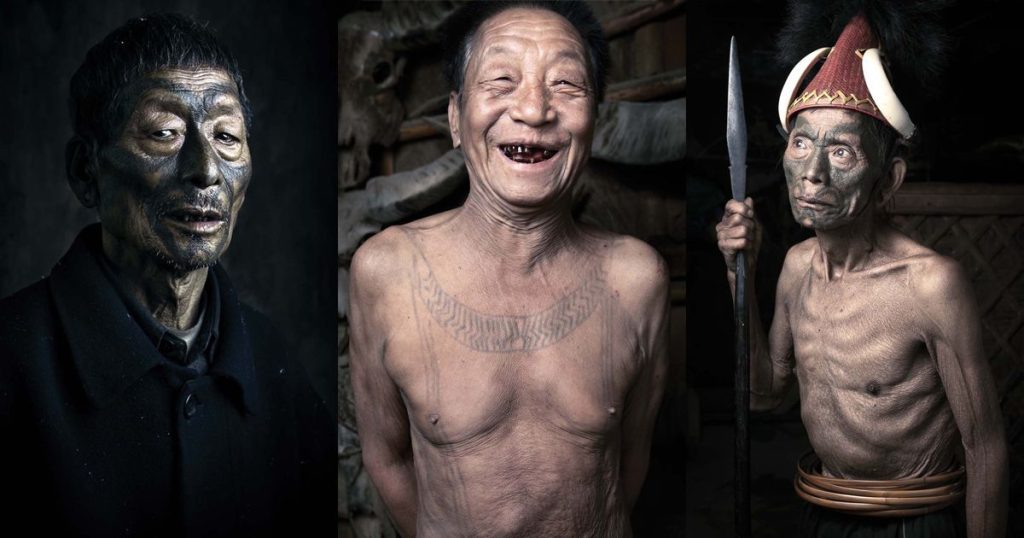
The Santhals
Found mainly in Bengal and Jharkhand, the Santhals tribe engraves coin-sized motifs, known as “Sikka,” on their foreheads. These tattoos hold cultural significance, with different designs for each gender, age, and body part. Santhals use odd numbers for their tattoos, signifying life, and even numbers for death. Women in the tribe have floral tattoos, like the Chati Godai, which is inked during puberty or marriage. They use thorns for needles and ink made from cow bile, pig fat, or crushed grape seeds.
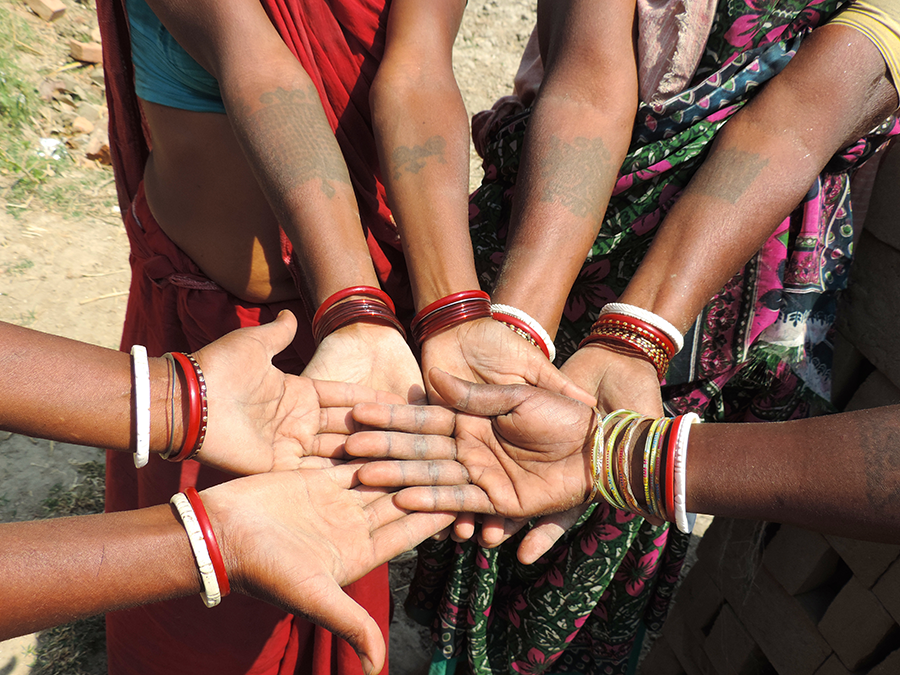
The Dhanuks
Based in Bihar, the Dhanuks tribe tattoos women as a protective measure against the evil eye of upper-caste men. Tattooing visible parts of women’s bodies makes them undesirable for sexual purposes and marks them as individuals from the lower caste.
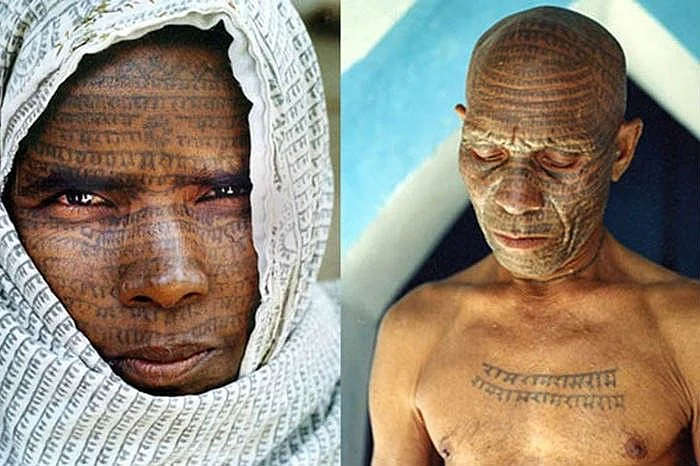
Toda Tribe of South India
Hailing from Tamil Nadu, the Toda tribe practices a long-lasting tattoo art called “Pachakutharathu.” The tattoos are believed to protect them from evil spirits until they reunite with their ancestors in heaven. The Korathi tattoo artists travel to rural areas to create these intricate tattoos, often featuring geometric shapes outlined in cross-stitch patterns.
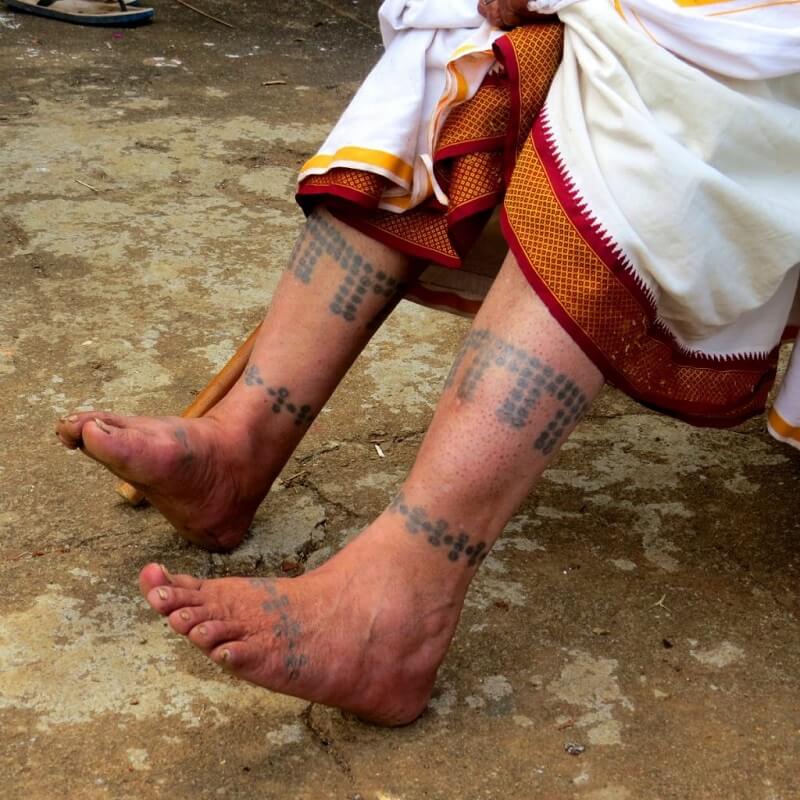
The AO Nagas
Hailing from Nagaland, the AO Nagas tribe practices a face and hand tattooing ritual called “Gondan.” Females undergo tattooing during adolescence, and it is considered shameful for them not to be tattooed. The ritual involves using cane thorns and sticks for ink, and it is strictly a female-centric affair.

Baiga Tribe in Madhya Pradesh
The Baiga tribe from Madhya Pradesh enhances their tattoo designs by applying a mixture of cow dung, turmeric, and vegetable oil, though this practice is unhygienic and potentially hazardous.
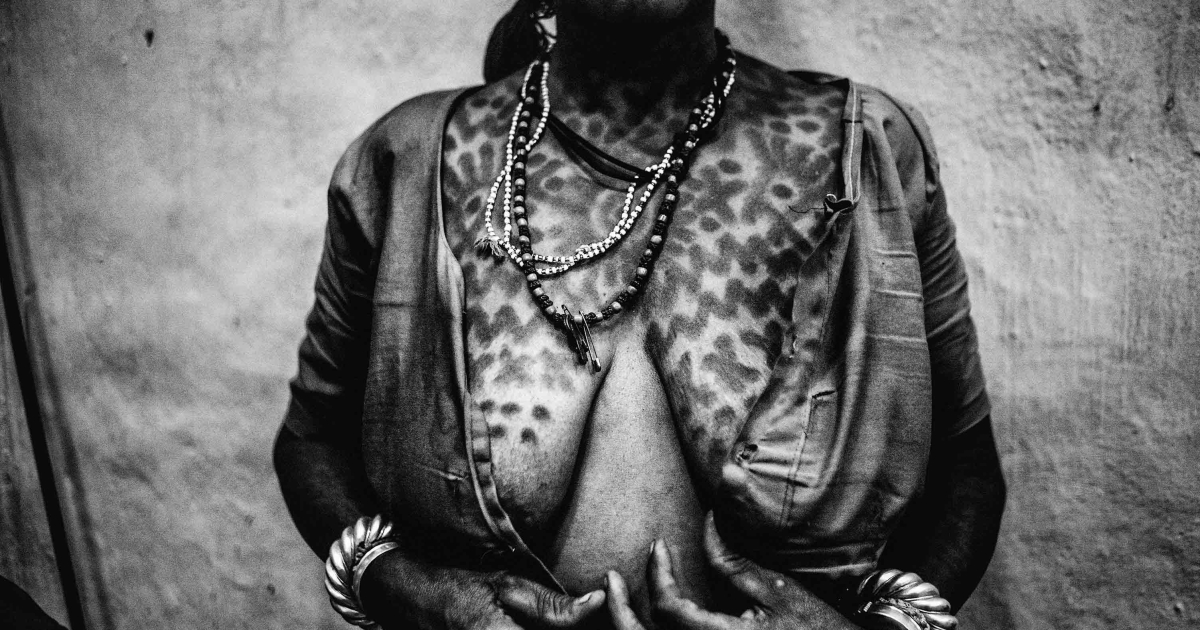
Evolution of Tattoos
Over time, Indian tattoos creatively merged with Western influences, leading to the fusion of traditional and contemporary styles. Hindu tattoos were introduced, and the resulting fusion has been widely adopted by many. While some traditional tribal tattoo practices have faded, others have survived through modern innovations and adaptations.
Conclusion
The history of tattoos in India is rich and diverse, reflecting the unique cultural practices of various tribes. Traditional tattoo art forms may have evolved over time, but their essence and significance remain deeply ingrained in Indian culture. As tattoo technology advances, people continue to appreciate and embrace this ancient art form, preserving its legacy for generations to come.
Feature Image: larskrutak

Contributor

